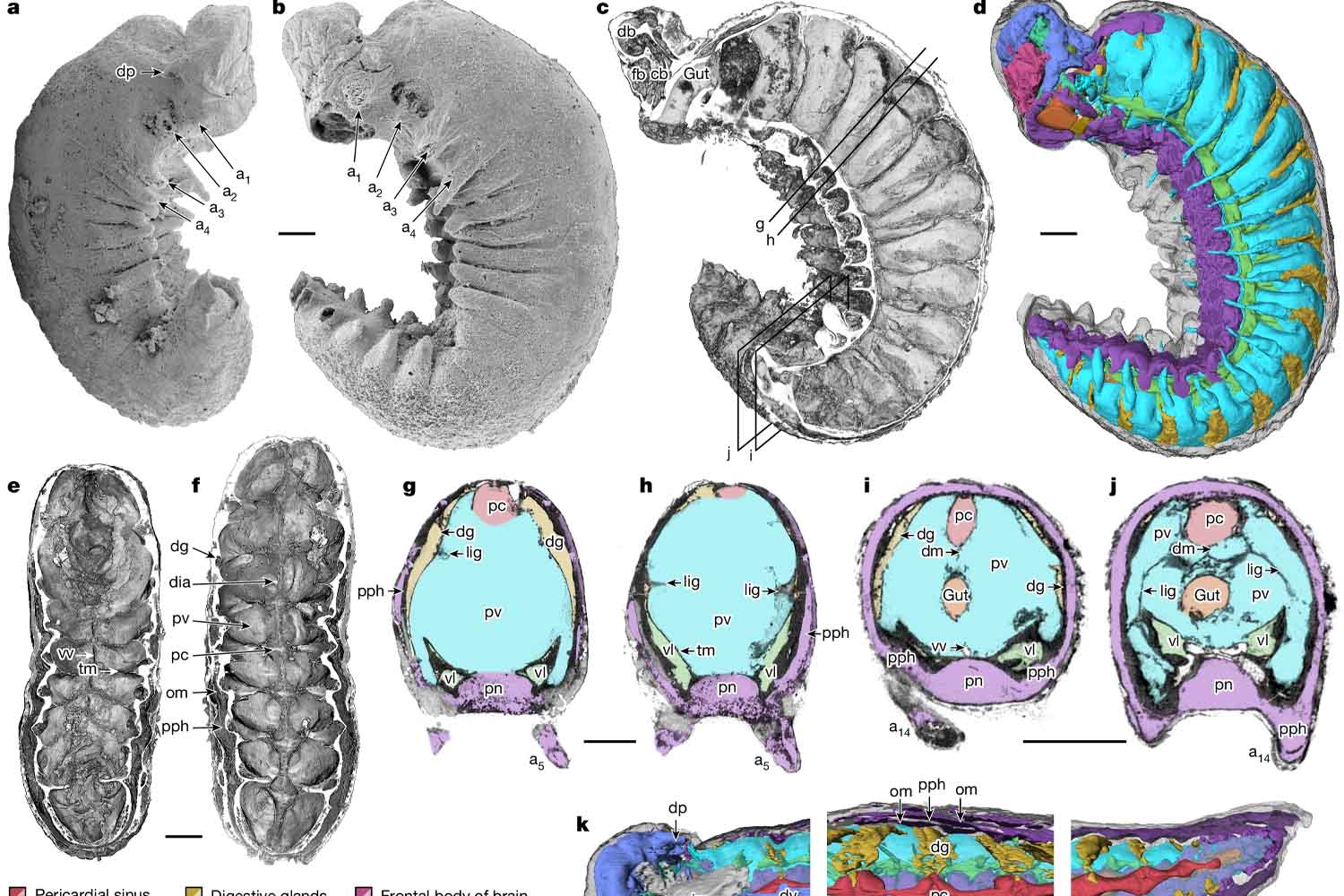A 520-million-year-old fossilized larva was found with its brain and organs intact, offering an unprecedented look at early animal evolution.

©Nature
It’s not every day that a fossil leaves even seasoned scientists stunned. Yet that’s exactly what happened when researchers uncovered a tiny arthropod larva, more than 520 million years old, with its brain and other internal organs perfectly preserved. The find is now reshaping how we understand the evolution of life on Earth.
A tiny fossil with its insides still intact
The discovery comes from an international study that examined a rare fossil from the Cambrian period, a time when life on Earth was branching out in spectacular fashion. Fossils usually conjure images of petrified bones or shells. But in this case, nature did something extraordinary: it preserved the soft tissues—the delicate parts that normally vanish quickly after death.
Using advanced synchrotron X-ray tomography, researchers were able to scan the fossil in 3D and peer inside the larva’s body. What they saw was astonishing: a brain, nerves, digestive glands, and even a primitive circulatory system—all still visible, all still identifiable.
A larva frozen in time
The fossil isn’t just well-preserved. It’s also extremely rare. Larvae are tiny, fragile, and nearly impossible to fossilize. Yet here it was, described by scientists themselves as preserved in a state that was “almost perfect.”
Martin Smith, paleontologist and lead author of the study, admitted this was the kind of discovery he had dreamed of for years. When he finally saw the internal structures beneath the fossil’s outer layer, he said:
“My jaw dropped. It’s incredible to think that these structures have resisted decay for half a billion years.”
Among those structures, scientists identified the protocerebrum, a primitive part of the brain that would, through evolution, give rise to the complex neural systems allowing arthropods—today’s insects, spiders, and crustaceans—to thrive in almost every environment.
The published research, accompanied by striking images, even revealed nerves that controlled the larva’s legs and eyes, offering a rare glimpse into how these creatures developed at the dawn of complex life.
Katherine Dobson, co-author of the study, highlighted the sheer luck and precision of this preservation:
“It’s always fascinating to see inside a fossil, but in this case nature did all the work: the preservation is truly exceptional.”
Source: Nature
